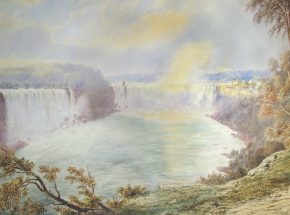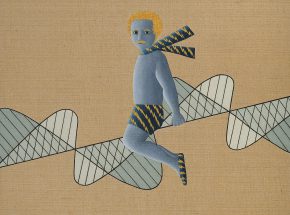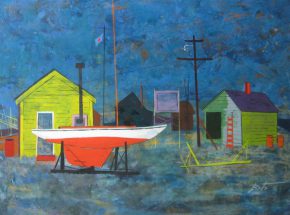

John William Hill was the son of the British aquatint engraver John Hill and the father of landscape painter and engraver, John Henry Hill. He immigrated with his family to the United States in 1819, and was apprenticed to his father in 1822 when his family moved from Philadelphia to New York City.
In 1833, by the age of twenty-one, Hill was elected an associate of the National Academy of Design, New York City. Early in his career he was a topographical artist employed by the New York State Geological Survey and later by Smith Brothers of New York City, for whom he made watercolor views of many American cities. About 1855, Hill read John Ruskin’s Modern Painters and became interested in the American Pre-Raphaelite Movement, of which he came to be considered the leading spirit in America.
A versatile artist, Hill worked in lithography, aquatint, and watercolor. He made detailed pictures directly from nature, many in watercolor and executed in a stipple technique with tiny brushes normally employed for miniatures. He exhibited at the National Academy of Design from 1829 until his death and also at the Brooklyn Art Association, New York from 1862 until his death.
http://whitemountainart.com/Biographies/bio_jwh.htm



